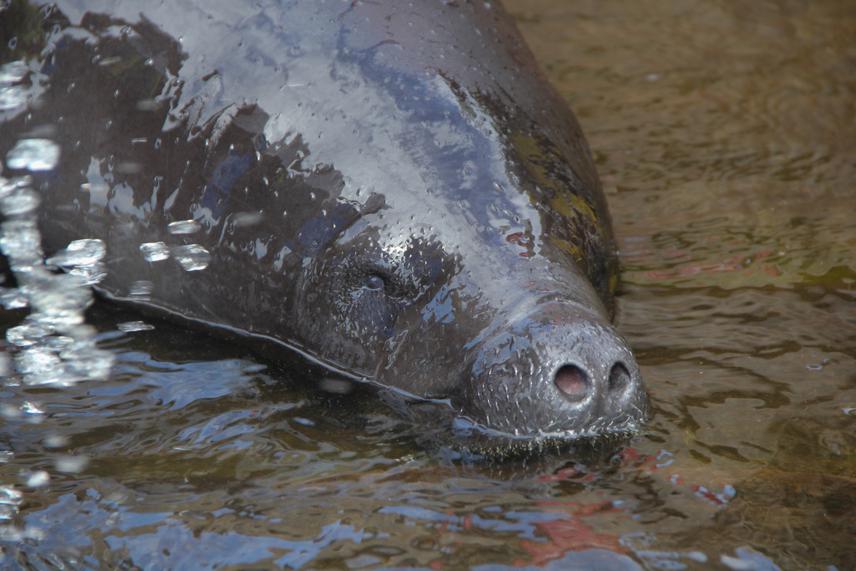Camila Carvalho de Carvalho
Other projects
24 Mar 2023
Exploring the Use of Sonars for an Unprecedented Estimate of Amazonian Manatee Abundance
Estimate Amazonian manatee population density in a Sustainable Development Reserve in Central Brazilian Amazon.

Amazonian manatee. © Amanda Lelis.
The Amazon region is world renowned for its water availability and variety of ecosystems. The Amazon basin comprises the most extensive river system of the globe, occupying a total area of 6.11 million km², extending over several countries in South America. This area is home to a variety of endemic species including Amazonian manatees, an exclusively freshwater species of sirenian that inhabits clear, white and black waters.
In Brazil, commercial exploitation between 1935 and 1954 caused the death of thousands of manatees, hunted for their meat and hide, resulting in a population decline. Nowadays Amazonian manatee is classified as Vulnerable in the IUCN Red List of Threatened Species and Brazilian Threatened Species List. Small-scale commercialization and subsistence hunting persist in the region, being the main threat to Amazonian manatees in the middle-Solimões region, followed by calf entanglement in fishing nets.
Population decline values are not known because there are no reliable population estimates of Amazonian manatees. A variety of methodologies were tested like feeding patches, sightings and interviews but they showed limited applications and results, being necessary the use and development of an alternative methodology. Side-scan sonar methodology was tested in manatee populations in Florida, Mexico and Colombia, presenting high detection rate of manatees, showing a potential use in population estimates of this cryptic species. The Research Group of Amazonian Aquatic Mammals of Mamirauá Institute for Sustainable Development (MISD) also tested side-scan sonar in lakes and rivers of Amanã Sustainable Development Reserve (ASDR), proving that it is possible to detect manatees in that environment. Under this scenario, this project was developed to:
(i) create a reference image bank of confirmed manatee pictures and large aquatic animals to facilitate sonar image interpretation
(ii) define side-scan sonar configurations
(iii) estimate population parameters in ASDR water bodies using side-scan sonar images and Distance sampling methodology.
Knowing population parameters is important to develop conservation strategies for threatened species. Improving manatee’s conservation plan will benefit the entire aquatic environment because manatees are an umbrella species, fertilizing waters and providing nutrients for other species, contributing for the health of the entire ecosystem.